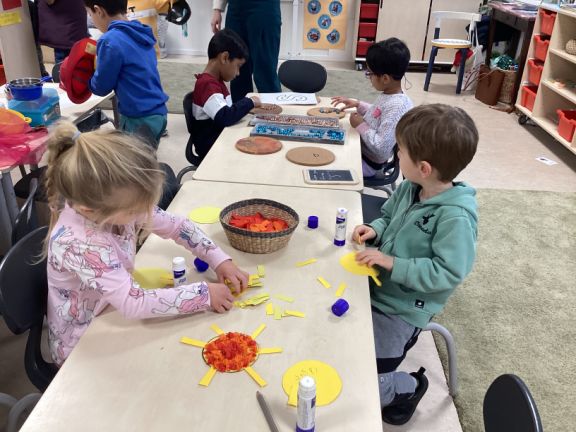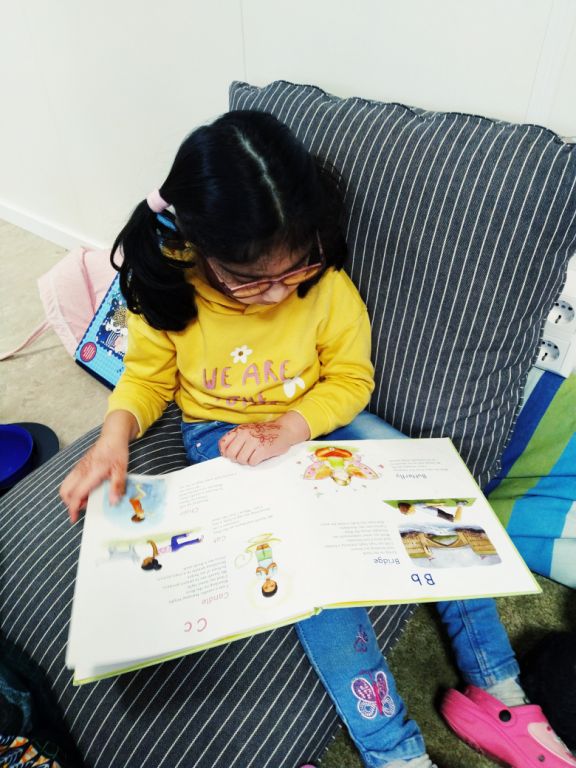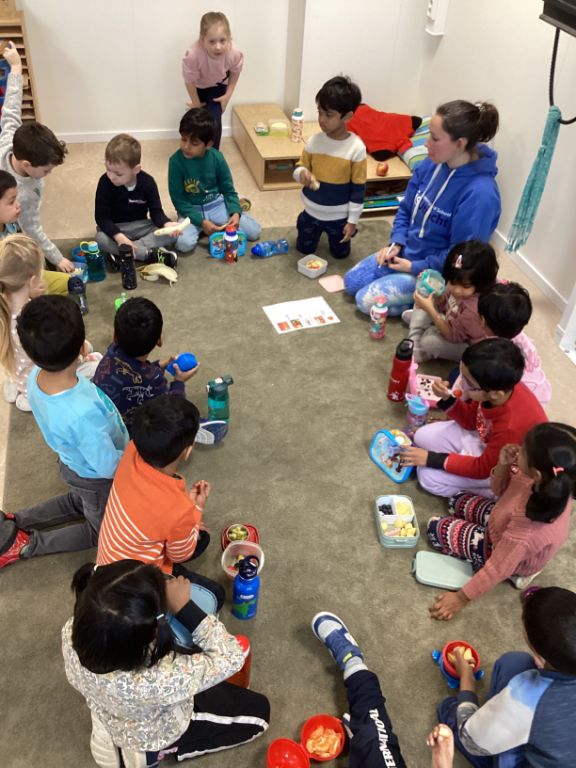By Dana Fabri, Classroom Teacher KG1 Blue
As you can see, this one trip involved math, language, PHE. Your trip, in one word, was transdisciplinary.
Learning in Kindergarten is the same, it is interconnected or transdisciplinary. Math is not taught as an abstract concept but in such a way that the students can connect it with their everyday lives as well as with other parts of our school day. We count the children at school so that we know who is here and who is absent then revisit this throughout the day to ensure that we have not lost anyone. We see numbers on the timer and know this means we only have that much time left to play or eat. We take a survey about the food we eat at snack time then use this data to make a graph.
Connect various learning areas
But wait, this is only math and so this by itself is not transdisciplinary. However, if we use shapes to create a picture, we are now using two learning areas: math and art. But we can also use art in other ways such as drawing a picture to tell a story or creating a craft during our free play…now we have three learning areas all connected: math, art, and storytelling.

Storytelling is also used as another way to connect learning to our daily lives. For example, a student noticed that the character in One Snowy Night drinks hot chocolate just like them when it is cold outside. And that is only the beginning. This text also fits in with our current unit of inquiry which is about weather and seasons. As we have been going through the winter season the children have again found similarities and also differences between Winter in Europe and across the world.
D for dolphin
Some children also connect to their own cultures and languages by recognising that during our yoga sessions we say ‘namaste’ which is 'Hindi, because yoga comes from India'. But it does not stop there. Our yoga sessions in KG2 are also connected back to our storytelling sessions as we use yoga poses to create a yoga flow, or story, that we tell with our bodies. The children connect with something that they have seen, or a letter sound of the week to think of a pose, such a D for dolphin and then they use the dolphin pose as part of their story.


In KG1 we use our phonics to help us to create yoga poses by finding ways to move our body to connect it to the letter sound of the week…Ss is for snake, slide, and sphinx. This then can connect back to the children’s free time when they decide to make a snake using a circle piece of paper and then we are back to shapes in math. Education is an integral part of our lives both as children but also as adults and everything is interconnected or transdisciplinary. We cannot learn one thing without seeing a connection to something else.
